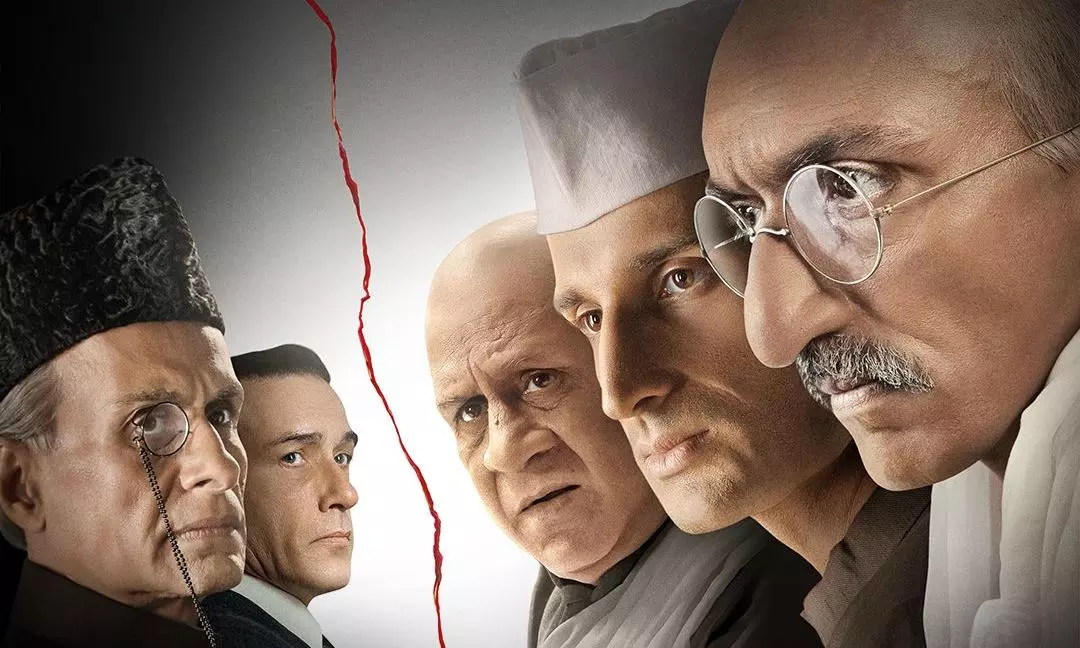A Riveting Retelling of India's Journey to Independence

A Riveting Retelling of India's Journey to Independence
Nikkhil Advani delivers a masterpiece with Freedom at Midnight, blending history, drama, and action while navigating the multifaceted struggle for India's freedom. Through the eyes of key figures—Pandit Jawaharlal Nehru (Sidhant Gupta), Sardar Vallabhbhai Patel (Rajendra Chawla), Mahatma Gandhi (Chirag Vohra), and Lord Louis Mountbatten (Luke McGibney)—the show offers a nuanced exploration of the political intrigue, personal sacrifices, and emotional upheavals that defined this historic era.
From the first frame, Freedom at Midnight grips you with its tight narrative and a balanced portrayal of its larger-than-life characters. What stands out is its refusal to take sides; instead, it allows viewers to empathize with the varied ideologies of Nehru, Patel, and Gandhi. Their differing visions for an independent India feel justifiable, adding depth to their portrayals and giving the audience much to ponder.
Stellar Performances and Masterful Direction
The performances elevate the show to another level. Sidhanth Gupta brings charisma and gravitas to Jawaharlal Nehru, capturing the internal conflict of a leader caught between Gandhi's idealism and the practical demands of nation-building. Chirag Vohra’s rendition of Gandhi is spellbinding, with every gesture, accent, and expression evoking authenticity.
Arif Zakaria delivers a nuanced portrayal of Muhammad Ali Jinnah, balancing ego, ambition, and intellect, while Ira Dubey adds a compelling dimension as Fatima Jinnah. The breakout stars are Rajendra Chawla as the indomitable Sardar Patel and Rajesh Kumar as Liaquat Ali Khan. Luke McGibney and Cordelia Bugeja shine as Lord and Lady Mountbatten, while Malishka Mendonsa surprises with her delightful turn as Sarojini Naidu.
A Cinematic Triumph
The show’s production design is stunning, bringing 1940s India to life with remarkable detail. Whether it's the meticulously recreated Viceroy’s House or the Congress offices, every frame reflects exhaustive research. The prosthetics, costumes, and set design are equally immersive, ensuring viewers feel like they’ve been transported to the era.
Advani’s direction ensures a fast-paced yet thoughtful narrative. The seven episodes fly by, leaving you both informed and emotionally stirred. The storytelling is sharp and unflinching, refusing to shy away from the inevitable pain of Partition.
A Bold Focus
Unlike other adaptations of India's freedom struggle, Freedom at Midnight narrows its scope to the pivotal years between 1944 and 1947. It avoids sprawling subplots, instead focusing on high-stakes events like the Gandhi-Jinnah talks and the lead-up to Partition. The decision to stop just short of Gandhi’s assassination underscores the gravity of the sacrifices made during those tumultuous times.
An Indian Crown
If The Crown offered an insider’s view of Britain’s monarchy, Freedom at Midnight does the same for India’s freedom movement. It pulls back the curtains on the political machinations, ideological conflicts, and behind-the-scenes deliberations that shaped modern India. The scale is grand, the storytelling epic, and the execution authentic, making this one of the most compelling series in recent memory.
Timely and Timeless
In an era where history is often reduced to polarizing soundbites, Freedom at Midnight is a refreshing and necessary exploration of India's past. It is meticulously researched, staying true to the essence of Larry Collins and Dominique Lapierre’s 1975 book while adding cinematic flair.
With season two already in the pipeline, this series is bound to become a legacy, one that future generations can learn from. This is not just a show—it’s a story that deserves to be passed on, reminding us of the cost of freedom and the ideals that built a nation.
Freedom at Midnight is a must-watch, offering tales beyond textbooks and truths that resonate across time.
( Source : Deccan Chronicle )
Next Story

